
Cathartic refers to an emotional release or purification experienced through a work of art, literature, or any expressive medium. It often involves a powerful emotional response, such as relief, purification, or healing, resulting from engaging with and processing intense or repressed feelings. A cathartic experience can be therapeutic, providing a sense of closure or emotional cleansing, and it is a fundamental concept in literature and the arts. Explore the concept of catharsis and its profound emotional release.

The term “cathartic” originates in ancient Greek philosophy and medicine, particularly in the works of the renowned philosopher Aristotle. In Aristotle’s “Poetics,” he introduced the concept of “catharsis” as a fundamental element of tragedy. He used it to describe the emotional release and purification that audiences experience when they engage with powerful and emotionally charged storytelling. While the exact interpretation of Aristotle’s use of “catharsis” has been the subject of scholarly debate, it has come to represent the idea of a cleansing or purging of emotions, often achieved through art, literature, or dramatic performances. The term has since become a central concept in aesthetics and psychology, highlighting the transformative power of artistic expression on human emotions and psychology.

The theory of Catharsis, rooted in ancient Greek philosophy and popularized by Aristotle in his work “Poetics,” revolves around the idea that engaging with art, particularly tragic drama, provides a psychological and emotional release or purification for the audience. Aristotle used the term “catharsis” to describe this effect, although he didn’t provide a precise definition.
The theory of Catharsis suggests that when people witness intense and emotionally charged events in art, they can process and purge their pent-up emotions and fears. In Greek tragedy, this often involved experiencing the suffering and downfall of tragic heroes. By empathizing with these characters and witnessing their misfortunes, audiences could confront and release their own negative emotions, achieving a sense of emotional balance and Catharsis.
However, it’s essential to note that the theory of Catharsis has been the subject of much debate and interpretation. Some believe it refers to cleansing unhealthy or negative emotions, while others view it as a more intellectual or spiritual purgation.
In contemporary discussions, the theory of Catharsis remains relevant, particularly in literature, drama, and psychology. It underscores the therapeutic and transformative power of art and storytelling, emphasizing their ability to provide emotional release, reflection, and healing for the audience.
Cathartic movie experiences refer to the emotional release and relief viewers feel when engaging with a particularly powerful or emotionally charged film. This concept is closely tied to Aristotle’s theory of Catharsis, which he discussed in his work “Poetics.”
In movies, Catharsis often occurs when the audience becomes deeply immersed in the narrative and connected to the characters. As the story unfolds, viewers may go through a range of emotions, such as empathy, tension, and even distress, as they witness the characters’ struggles and challenges. When the film reaches its climax or resolution, it often leads to a profound emotional release, offering viewers a sense of relief, resolution, and Catharsis.
Cathartic movies can explore intense or universal themes like love, loss, personal growth, or overcoming adversity. These films allow audiences to process their emotions, find closure, and gain new insights, all within a captivating and relatable story. The cathartic experience in movies can be therapeutic and transformative, allowing viewers to connect with their own emotions and experiences through the art of film.
A cathartic moment is a powerful emotional release or purging of pent-up feelings. Here’s an example:
Imagine a character named Sarah struggling with the grief of losing her beloved grandmother. She has bottled her emotions for months, not fully processing her loss. One day, she visits her grandmother’s old house, which holds many cherished memories.
As Sarah walks through the rooms, she is flooded with memories of her grandmother. She starts to feel a deep sadness, longing, and regret for not spending more time with her before she passed away. Sarah begins to cry uncontrollably, releasing all the emotions she has been holding back.
At this moment, as tears stream down her face, Sarah finally allows herself to grieve. She talks about her grandmother’s memory, apologizing for not being there more often and expressing her love and gratitude. As she pours out her heart, Sarah begins to feel a sense of relief and closure. This emotional release is a cathartic moment for her as she finally confronts her grief and begins healing.
The cathartic effect in films refers to the emotional release and purification viewers experience when engaging with a particularly powerful or emotionally charged cinematic moment. It is a transformative experience where the audience connects deeply with the characters and their struggles, often culminating in a moment of resolution, revelation, or transformation. This emotional release provides relief and fulfillment, allowing the audience to process their emotions, find closure, and gain new insights within the storytelling context. The cathartic effect is a fundamental aspect of the cinematic experience, allowing viewers to connect with their feelings and experiences through the art of film.
Catharsis is the emotional core of your narrative. Neglecting it in screenwriting can lead to a loss of the essential emotional bond between characters and the audience, which is crucial for broadening your film’s appeal. Begin by crafting character profiles and story arcs, then delve into the pivotal emotional moments and how to portray them visually on screen. Don’t limit this planning to your main character alone; remember to extend it to your supporting characters and antagonists, particularly if you intend to depict a transformation in your villain’s perspective following their defeat.
Catharsis plays a crucial role in screenwriting and storytelling for several reasons:
A skillfully constructed cathartic moment in a screenplay enables the audience to establish a profound emotional connection with both the characters and the storyline. This engagement draws viewers in on a personal level, amplifying the overall impact of the narrative.
Cathartic moments often lead to significant character development. Characters’ growth and transformation are driven by their ability to confront and resolve internal and external conflicts, making the story more compelling.
Catharsis contributes to the narrative structure by providing a satisfying resolution. It brings closure to storylines, ensuring that the audience leaves the movie with a sense of fulfillment.
Catharsis is a powerful tool for keeping the audience engaged throughout the film. It heightens suspense, tension, and emotional investment, making the story more riveting.
Catharsis can serve as a vehicle for conveying themes and messages in the story. It allows the screenwriter to explore and communicate important ideas, values, or life lessons through the characters’ emotional journeys.
Catharsis is at the heart of what makes storytelling an art form. It provides a means for screenwriters to create memorable, resonant, and transformative experiences for the audience.
Ultimately, the importance of Catharsis lies in the entertainment and enjoyment it offers the audience. It provides a sense of Catharsis, leaving viewers with a profound and often cathartic emotional experience.
In screenwriting, Catharsis is a tool that allows writers to deliver compelling and emotionally satisfying narratives, making their scripts more engaging and memorable. It is a fundamental aspect of storytelling that keeps audiences returning for more.
Creating a cathartic moment in a screenplay involves careful planning and execution. Here are steps to help you craft an emotionally resonant and impactful cathartic moment:
Establish well-developed, relatable characters with distinct motivations, desires, and arcs. The cathartic moment should be a culmination of their emotional journey.
Introduce and build conflicts that test your characters emotionally and psychologically. The Catharsis is most powerful when it follows intense conflict or adversity.
Gradually escalating emotional tension throughout the narrative enables the audience to forge a profound connection with the characters’ hardships and obstacles.
Identify the turning point in your screenplay where the characters face a critical decision, realization, or confrontation. This turning point should represent the heart of the cathartic moment.
The cathartic moment often involves a revelation or transformation in the characters. They may confront their fears, change their perspectives, or achieve personal growth. This transformation should be emotionally significant and well-earned.
Consider how the visual and cinematic elements can enhance the Catharsis. This includes lighting, music, camera angles, and pacing. These elements should align with the emotional tone and impact you want to create.
The cathartic moment should provide resolution and closure to the characters’ emotional arcs. It doesn’t necessarily mean a happy ending, but should offer emotional fulfillment and clarity.
Ensure that the cathartic moment feels authentic and earned. Avoid contrived or forced resolutions that may feel artificial to the audience.
Keep the audience emotionally engaged throughout the story to be invested in the cathartic moment. Create empathy for the characters and their struggles.
Use subtext and symbolism to add depth to the cathartic moment. These elements can convey deeper meanings and provide a more profound experience for the audience.
After writing the cathartic moment, review and refine it. Seek feedback from others to ensure it has the desired emotional impact.
Consider the timing of the cathartic moment within the overall structure of your screenplay. It typically occurs near the climax or resolution of the story.
Ensure the cathartic moment is relevant to your screenplay’s overarching themes and messages. It should contribute to the overall narrative’s purpose and meaning.
Remember that creating a cathartic moment is about connecting with the audience emotionally, providing them with a powerful and transformative experience. It’s a fundamental element of storytelling that can leave a lasting impact on your viewers.
In the context of psychology and emotional experiences, there are two main types of Catharsis:
This type of Catharsis involves a mental or intellectual release of emotions. It occurs when an individual gains insight or understanding about their feelings, experiences, or situation. Cognitive Catharsis often involves reflection, self-analysis, and a sense of clarity. For example, someone might have a cognitive cathartic moment when they finally understand why they’ve been feeling a certain way or when they have an “aha” moment that provides them with a new perspective on a problem.
Emotional Catharsis is a more visceral and immediate release of pent-up emotions. It typically involves expressing emotions physically or expressively, such as crying, shouting, or engaging in a physical activity like punching a pillow. Emotional Catharsis is often seen as relieving emotional tension or stress. For example, a person might experience emotional Catharsis by sobbing uncontrollably after suppressing grief or anger.
Both types of Catharsis can be beneficial in their ways. Cognitive Catharsis can lead to increased self-awareness and personal growth, while emotional Catharsis can provide immediate relief from intense emotional pressure. The effectiveness of Catharsis varies from person to person, and the appropriate type of Catharsis may depend on the individual and the specific circumstances.
We turn to film for catharsis and relief because it provides a distinctive and potent means of emotional expression and release. Films have the ability to evoke a broad spectrum of emotions, enabling viewers to establish deep and personal connections with characters and storylines. Here are a few reasons why we frequently seek catharsis and relief through film:
Films often feature relatable characters and situations that mirror our experiences and emotions. Watching characters on screen go through challenges, triumphs, heartbreaks, and joys can help us feel less alone in our struggles.
Watching a movie provides a safe and controlled environment to explore and release our emotions. We can cry, laugh, or feel anger with the characters without the fear of judgment, and this emotional release can be incredibly cathartic.
Sometimes, we turn to film as a form of escapism. It allows us to temporarily escape our worries and immerse ourselves in a different world, relieving everyday stresses.
Movies often offer different perspectives on life, relationships, and adversity. They can provide valuable insights and offer a fresh viewpoint on our challenges, helping us gain clarity and understanding.
Many films are crafted to elicit strong emotional reactions from the audience. These emotional journeys can be cathartic, helping us process our feelings and experiences.
In summary, film is a potent tool for Catharsis and relief because it taps into our emotions, offers a safe space for expression, and allows us to gain insight and perspective. Whether seeking comfort, inspiration, or a release from pent-up emotions, cinema can provide the emotional outlet we need.
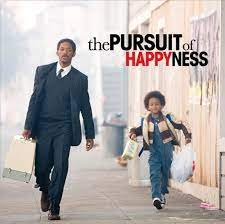
Moment: Chris has spent the film struggling to achieve his dream of attaining a well-paying job to support himself and his homeless son. After his unpaid internship as a stockbroker ends, with low chances of moving to a paid position, he’s asked into his boss’s office.
[Jwatchnow link=”https://www.amazon.com/Pursuit-Happyness-Will-Smith/dp/B000OW77UU/ref=sr_1_1?crid=2T39JN3V5PMOP&keywords=pursuit+of+happyness&qid=1698121705&sprefix=pursui%2Caps%2C425&sr=8-1″ watchon=”Amazon”]
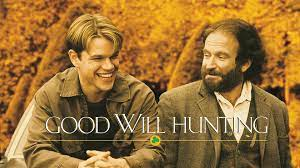
Moment: After opening up to Sean and making some progress in life, Sean confronts Will after their last session, hoping to finally break through to the young man who has led a violent life due to the physical abuse he experienced as a child.
[Jwatchnow link=”https://www.amazon.com/Good-Will-Hunting-Ben-Affleck/dp/B006RXPT82/ref=sr_1_1?crid=1AK0DSVHJ1S3P&keywords=Good+Will+Hunting&qid=1698121802&sprefix=good+will+hunting%2Caps%2C757&sr=8-1″ watchon=”Amazon”]

Moment : After a young Carl meets Ellie, we see their marriage progress throughout the years, leading to the inevitable truth that we all must deal with at once — the loss of the ones we love.
[Jwatchnow link=”https://www.amazon.com/Up-Ed-Asner/dp/B0094KTA4Y/ref=sr_1_1?crid=2EP1NOJHFNZ7Z&keywords=up&qid=1698122033&sprefix=up%2Caps%2C610&sr=8-1″ watchon=”Amazon”]
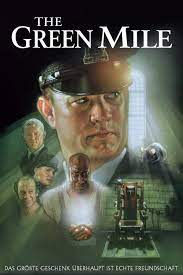
Moment: At a point, John is innocent of his crimes. Yet, it can’t be proven to the courts. His execution has to go through, although the correctional officers know that they are killing an innocent man and one who has touched their lives in so many different ways.
[Jwatchnow link=”https://www.youtube.com/watch?v=Uj32a69P95Y” watchon=”YouTube Movies”]
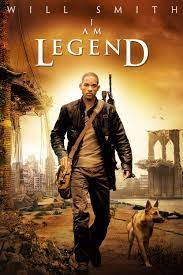
Moment: Through the film’s first act, Robert has had his trusty dog at his side. A pup that has been with him since the beginning of the plague. Until one fateful moment when she is defending Robert and gets bitten.
[Jwatchnow link=”https://www.youtube.com/watch?v=qSfNwhL9hAk” watchon=”YouTube Movies”]
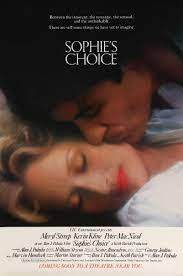
Moment: In the film’s closing moments, it’s revealed that Sophie is forced to choose which child is taken to their death.
[Jwatchnow link=”https://www.amazon.com/Sophies-Choice-Meryl-Streep/dp/B000K3M1VI/ref=sr_1_1?crid=2KHDNUOIITVO7&keywords=Sophie%E2%80%99s+Choice&qid=1698123389&sprefix=sophie+s+choice%2Caps%2C832&sr=8-1″ watchon=”Amazon”]
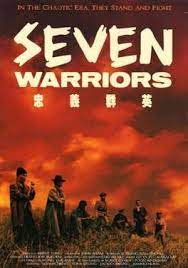
Moment: It’s a Brother vs. brother moment. Each deserves to win. Each of them needs to win. But only one can.

Moment: Ray realizes that all he did wasn’t for Shoeless Joe. It was to reunite with his father and make amends for the time they wasted before his death.
[Jwatchnow link=”https://www.amazon.com/Field-Dreams-Kevin-Costner/dp/B009CGADQ4/ref=sr_1_1?crid=3TTB37PHZ3N46&keywords=Field+Of+Dreams&qid=1698124167&sprefix=field+of+dreams%2Caps%2C767&sr=8-1″ watchon=”Amazon”]

Moment: After years together, they cling to each other as they fall towards certain doom.